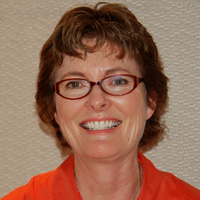Twenty years ago this month I first heard the word gluten, as in, "Ask your daughter’s doctor to check for gluten intolerance." It came from a colleague of my husband’s down south in response to our pre-Internet SOS call for ideas why our 20-month-old daughter was wasting away before our eyes, and the eyes of the 54 physicians who had studied her malady over the previous three months. A biopsy taken four days later confirmed that Molly’s malnutrition was indeed caused by undiagnosed celiac disease.
Right away she went on a gluten-free diet: no wheat, barley, rye, or (in those days) oats. Corn and rice were her grains of choice. Period. We were told she’d never be able to have pasta, pizza, or decent-tasting bread, cakes or cookies.
But she would live. Food was, and still is her medicine. That’s one of the few things that hasn’t changed for celiacs in the last 20 years. Yet I refused to doom my kid to a diet of mushy pasta and doorstopper bread. I went to work finding and developing recipes the entire family would enjoy. I incorporated into my baking new whole-grain flours, some of which were old-world: sorghum, amaranth, brown rice, quinoa, teff, flax, buckwheat. Mercifully, gluten-free products started showing up on supermarket shelves, not just in specialty stores. Gluten-free bakeries opened. Restaurants offered gluten-free menu items. And gluten-free products were the hottest trend at last month’s Fancy Food Show in San Francisco!
Yet for Molly and the other one in 133 Americans who have celiac disease, or the even larger percentage of the public with a degree of gluten intolerance, gluten-free is not a fad, trend or choice. "Cheating" puts celiacs at increased risk for developing other auto-immune disorders and even cancer. Any cure for celiac disease, such as a pill containing an enzyme to break down the protein in gluten, is proving more elusive than we thought 10 years ago. But it shouldn't continue to be so difficult for doctors to diagnose celiac disease -- many adults still suffer symptoms for years.
It’s not a scary diagnosis. And there are some pretty tasty gluten-free brownies out there.
